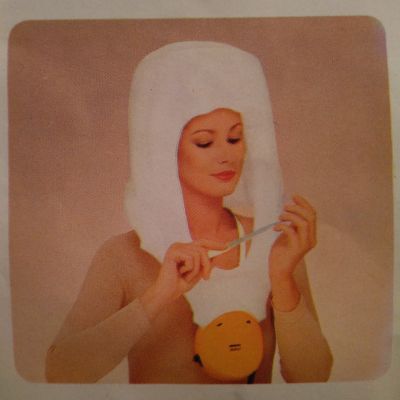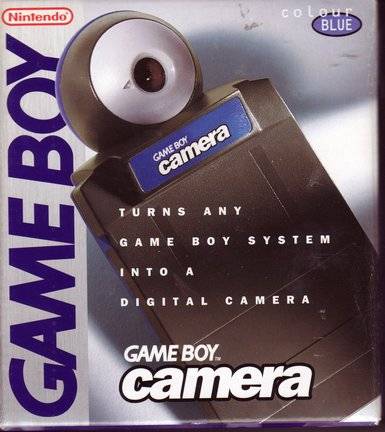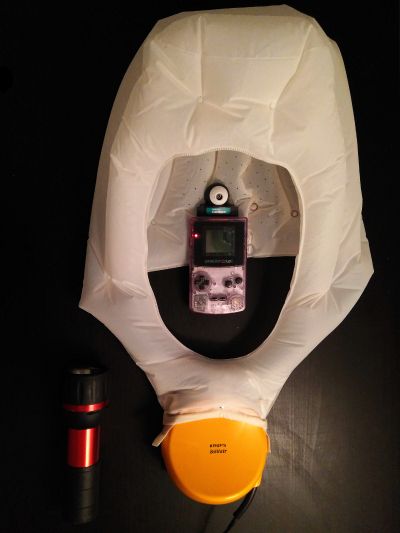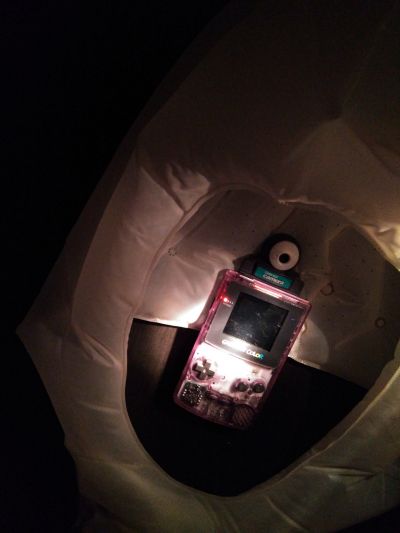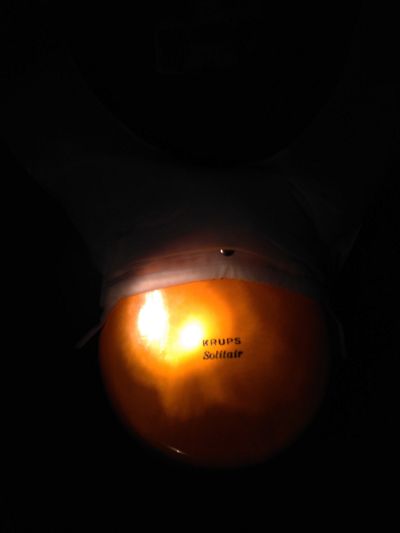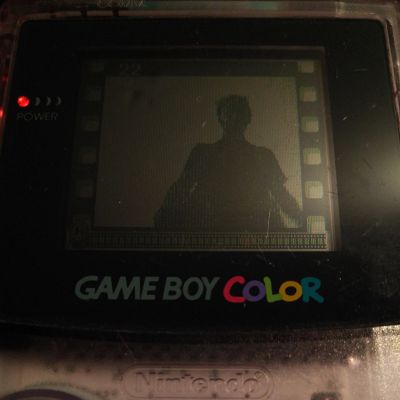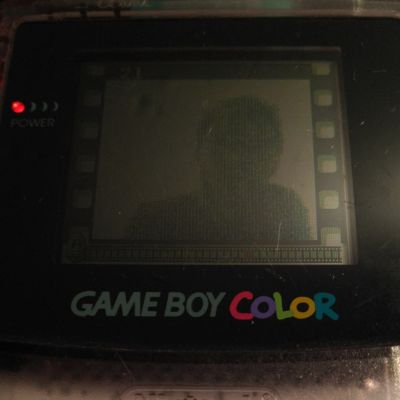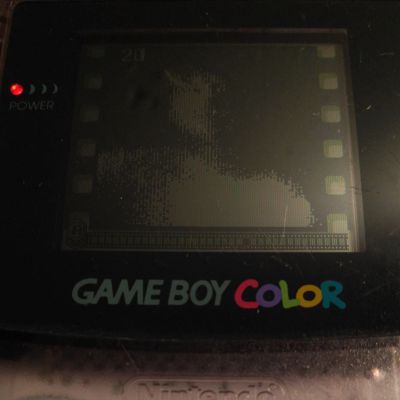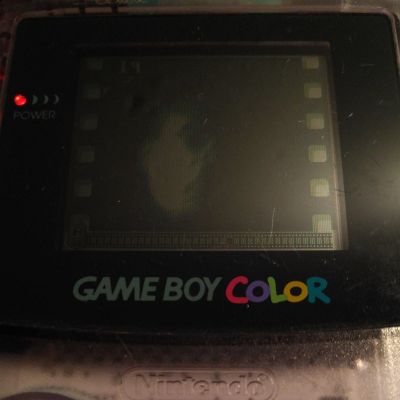No edit summary |
No edit summary |
||
| Line 22: | Line 22: | ||
This installation demands the interaction of the visitor and gets a performance as soon as sombody starts the investigation and participation. It is supposed to be setuped in a medium dark room on the ground and cosists of one torch light, one original hover hood (Schwebehaube in German) by Krups and one Gameboy Color including a Game Boy Camera. Both systems are turned on. What you hear is the hover hood buzzing and some odd 8 bit Nintendo melodies out of the Gameboy Color. Both are attached to the ground, you can not lift it, only the A button works and can get pushed, the torchlight is movable and can get turned on. On the top of the Gameboy the camera lense is looking to the visitor. By using the torch light to look around, the visitor can realise that the screen of the Gameboy shows a changing picture that is affected by the light. By putting the flare on the Gameboy you almost only see a white screen, but due to the delay of the screen you can witness for a second that it must have been showing something different before. Further experiments by the visitor will lead to the perception, that it is not possible to see yourself "live" in the screen like in an (actually very low resolution nostalgic) mirror, because the screen needs light to be able to show something and the lense is too sensitive for the brightness of the torch light. Continously this lense of the 90s is observing the visitor but never shows what it sees when you do not try to look on the screen | This installation demands the interaction of the visitor and gets a performance as soon as sombody starts the investigation and participation. It is supposed to be setuped in a medium dark room on the ground and cosists of one torch light, one original hover hood (Schwebehaube in German) by Krups and one Gameboy Color including a Game Boy Camera. Both systems are turned on. What you hear is the hover hood buzzing and some odd 8 bit Nintendo melodies out of the Gameboy Color. Both are attached to the ground, you can not lift it, only the A button works and can get pushed, the torchlight is movable and can get turned on. On the top of the Gameboy the camera lense is looking to the visitor. By using the torch light to look around, the visitor can realise that the screen of the Gameboy shows a changing picture that is affected by the light. By putting the flare on the Gameboy you almost only see a white screen, but due to the delay of the screen you can witness for a second that it must have been showing something different before. Further experiments by the visitor will lead to the perception, that it is not possible to see yourself "live" in the screen like in an (actually very low resolution nostalgic) mirror, because the screen needs light to be able to show something and the lense is too sensitive for the brightness of the torch light. Continously this lense of the 90s is observing the visitor but never shows what it sees when you do not try to look on the screen. | ||
[[file:dunkelaufgeblasen.jpeg|400px|]] [[file:dunkelkrups.jpeg|400px|]] | |||
Except you discover the A button. It will allow the visitor to stop (and save) what the camera sees when you don't try to look in the screen with the torch light. E.g. it is possible to put your own head into good light to shoot a well exposed image. Nevertheless you are not able to judge live about the quality of the photo everybody is used to with a regular smartphone camera in a selfie situation nowadays. You are forced to rely on your feeling and this oldschool digital technique. Also the visitor will get asked for his will to save the picture. A decision is necessary to conntinue the selfie fun. Answering "yes" results in storing the picture inside the Gameboy without ever being able to see it again, because the B button does not work which is necessary to enter the gallery mode. Luckily afterwards the visitor can continue doing selfies. This is also possible with the answer of "no". The only difference is, that the pictures you shoot are not getting into the hands of the owner of the Gameboy Color. | |||
[[file:schattenspiel1.jpeg|400px|]] | |||
[[file:schattenspiel1.jpeg|400px|]] [[file:schattenspiel2.jpeg|400px|]] [[file:schattenspiel3.jpeg|400px|]] [[file:schattenspiel4.jpeg|400px|]] | |||
Revision as of 23:25, 30 September 2018
GENERATIONENKONFLIKT
This installation demands the interaction of the visitor and gets a performance as soon as sombody starts the investigation and participation. It is supposed to be setuped in a medium dark room on the ground and cosists of one torch light, one original hover hood (Schwebehaube in German) by Krups and one Gameboy Color including a Game Boy Camera. Both systems are turned on. What you hear is the hover hood buzzing and some odd 8 bit Nintendo melodies out of the Gameboy Color. Both are attached to the ground, you can not lift it, only the A button works and can get pushed, the torchlight is movable and can get turned on. On the top of the Gameboy the camera lense is looking to the visitor. By using the torch light to look around, the visitor can realise that the screen of the Gameboy shows a changing picture that is affected by the light. By putting the flare on the Gameboy you almost only see a white screen, but due to the delay of the screen you can witness for a second that it must have been showing something different before. Further experiments by the visitor will lead to the perception, that it is not possible to see yourself "live" in the screen like in an (actually very low resolution nostalgic) mirror, because the screen needs light to be able to show something and the lense is too sensitive for the brightness of the torch light. Continously this lense of the 90s is observing the visitor but never shows what it sees when you do not try to look on the screen.
Except you discover the A button. It will allow the visitor to stop (and save) what the camera sees when you don't try to look in the screen with the torch light. E.g. it is possible to put your own head into good light to shoot a well exposed image. Nevertheless you are not able to judge live about the quality of the photo everybody is used to with a regular smartphone camera in a selfie situation nowadays. You are forced to rely on your feeling and this oldschool digital technique. Also the visitor will get asked for his will to save the picture. A decision is necessary to conntinue the selfie fun. Answering "yes" results in storing the picture inside the Gameboy without ever being able to see it again, because the B button does not work which is necessary to enter the gallery mode. Luckily afterwards the visitor can continue doing selfies. This is also possible with the answer of "no". The only difference is, that the pictures you shoot are not getting into the hands of the owner of the Gameboy Color.
